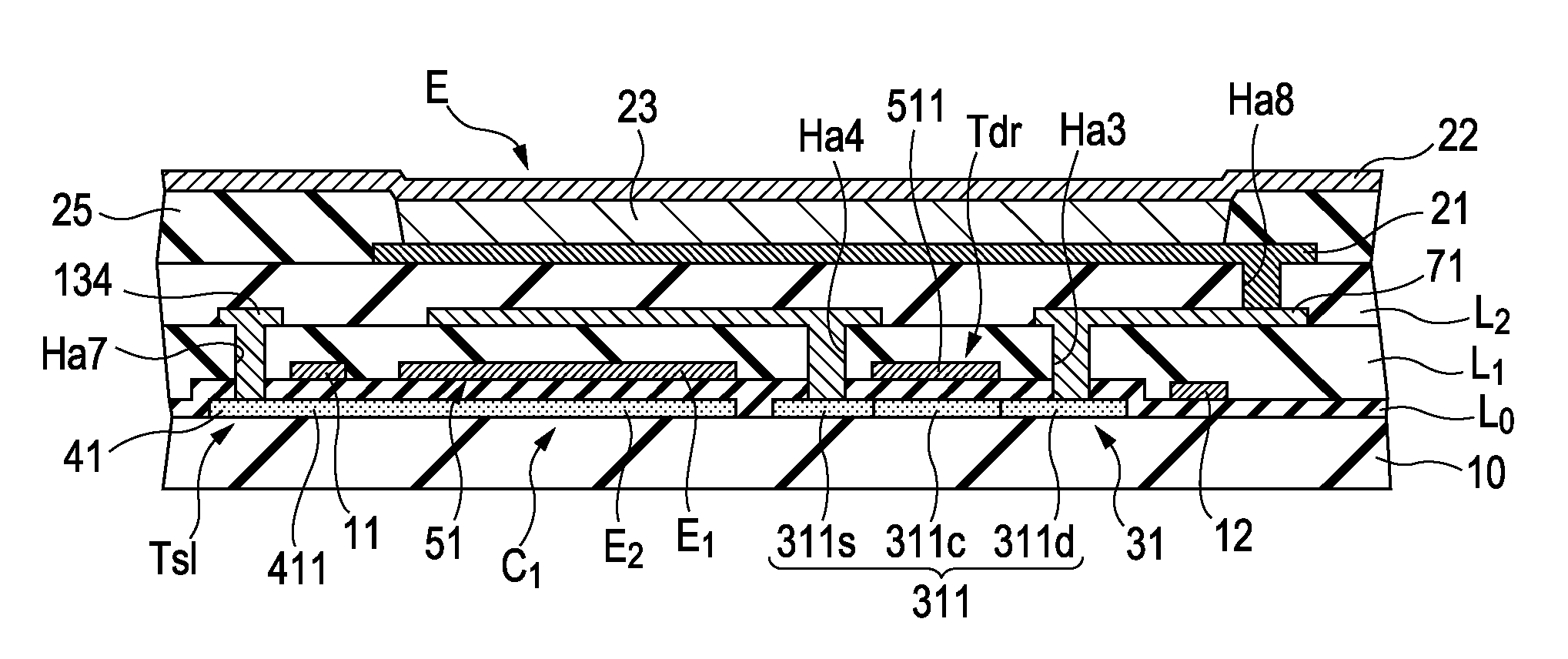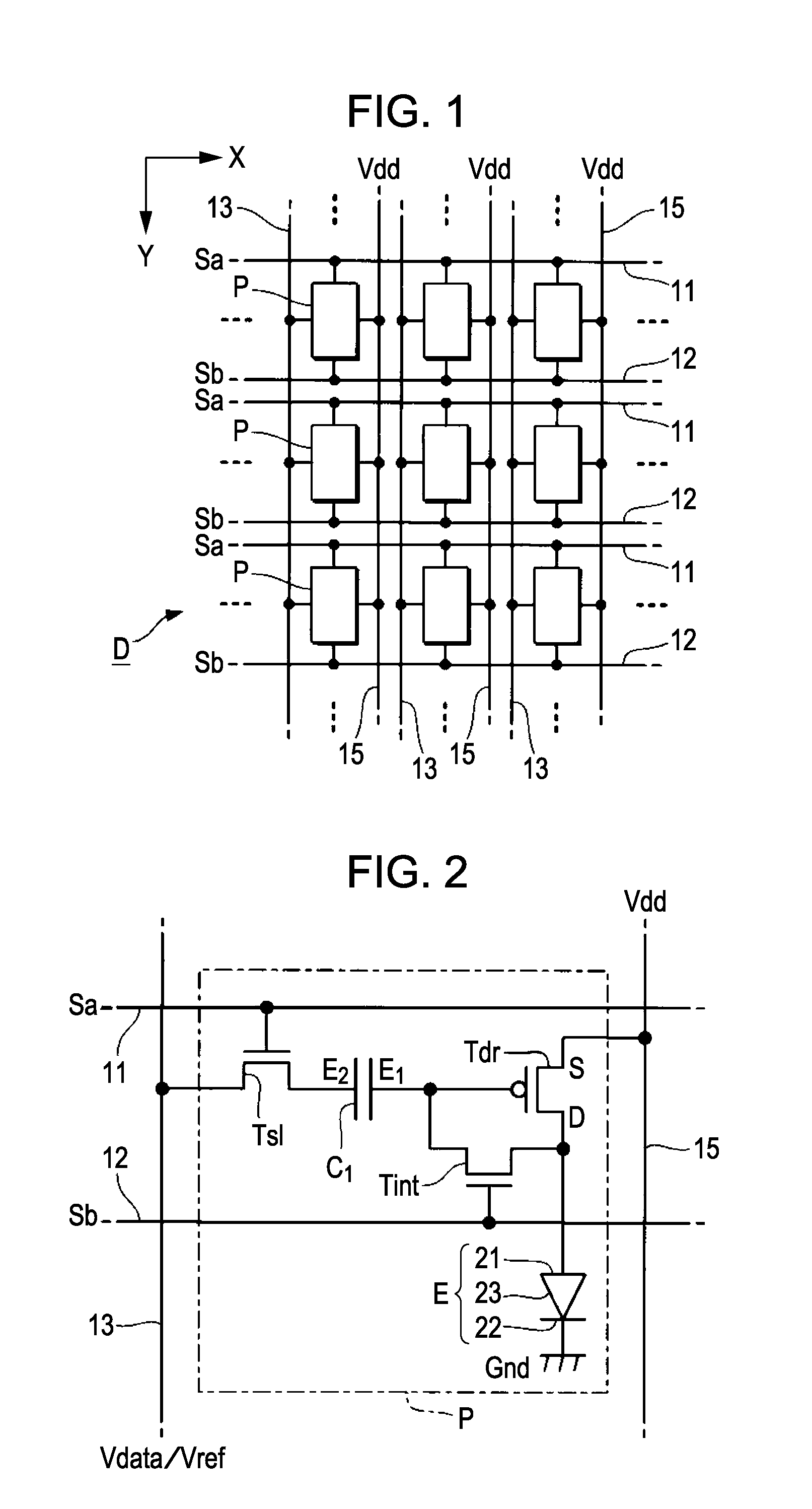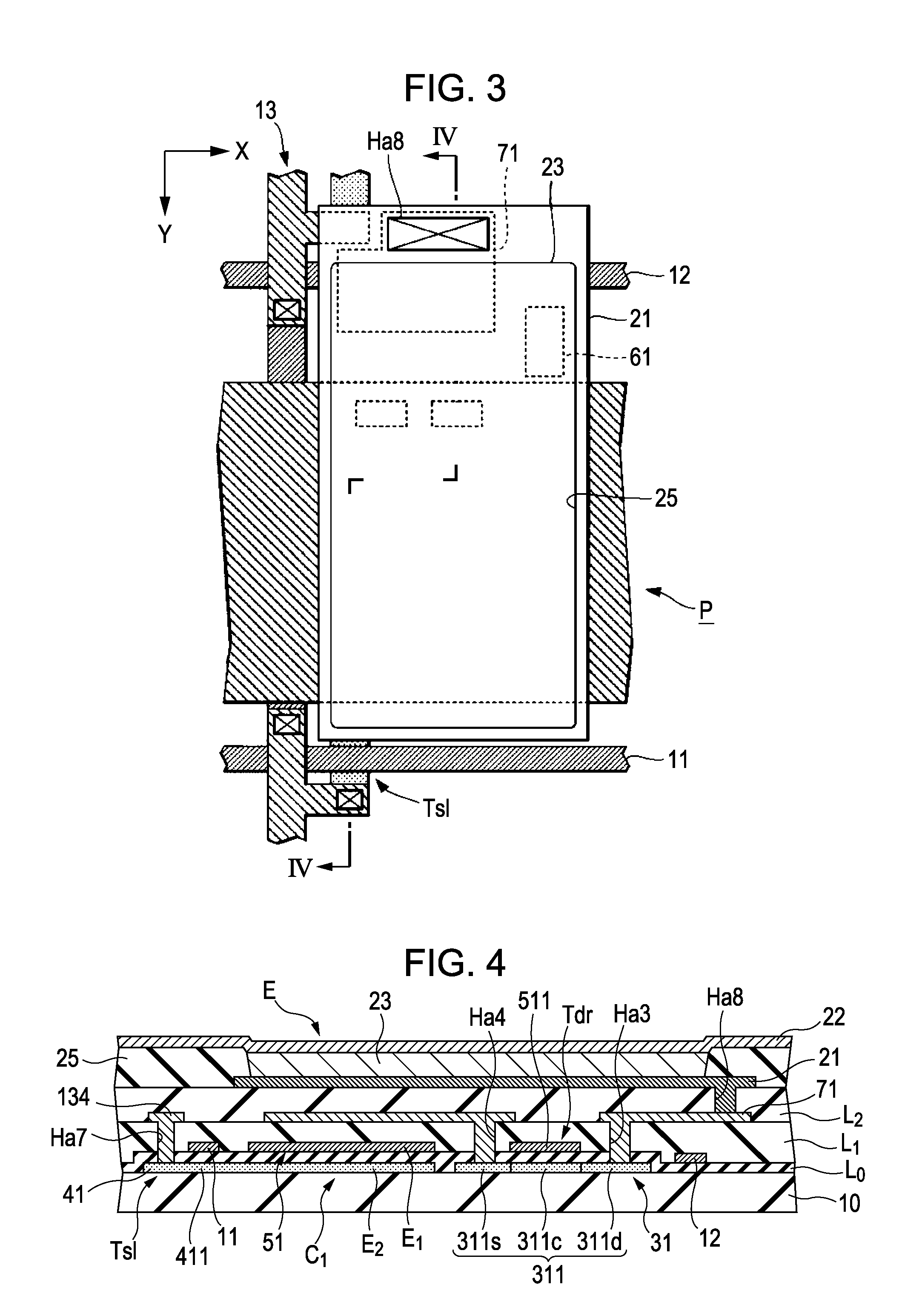Light-emitting device and electronic apparatus
a technology of light-emitting devices and electronic devices, which is applied in the direction of transistors, optics, instruments, etc., can solve the problems of inhibiting high-precision control of the behavior of light-emitting elements, parasitic capacity between adjacent components, etc., and achieves the effect of reducing the space between the drive transistor and the capacitor element, reducing the parasitic capacity, and suppressing the parasitic capacity
- Summary
- Abstract
- Description
- Claims
- Application Information
AI Technical Summary
Benefits of technology
Problems solved by technology
Method used
Image
Examples
first embodiment
B-1: First Embodiment
[0063]First, description will be made of the specific structure of the unit element P in a light-emitting device D according to a first embodiment of the invention. FIG. 3 is a plan view showing the configuration of one unit element P, and FIG. 4 is a sectional view taken along line IV-IV in FIG. 3. Although FIG. 3 is a plan view, a component common to that shown in FIG. 4 is hatched in a similar manner to in FIG. 4 in order to facilitate the understanding of each component. This applies to the other plan views referred to below.
[0064]As shown in FIG. 4, the components such as the drive transistor Tdr and the light-emitting element E shown in FIG. 2 are formed on the surface of a substrate 10. The substrate 10 is a plate-shaped member composed of any one of various insulating materials, such as glass and plastics. The components of the unit element P may be formed on an insulating film (e.g., a film of silicon oxide or silicon nitride) provided as an underlying ...
second embodiment
Modified Example of Second Embodiment
[0124]Next, a modified example of the above-described second embodiment will be described. FIG. 17 is a plan view showing the step (the step shown in FIG. 14) of forming the first insulating layer L1 in this modified example. In the second embodiment, the gate electrode 521 of the drive transistor Tdr extends in the Y direction. However, in the modified example, as shown in FIG. 17, the gate electrode 521 extends in the X direction. In the modified example, the same components as in the second embodiment are denoted by the same reference numerals, and the description thereof is appropriately omitted.
[0125]As shown in FIG. 17, in this embodiment, the intermediate conductor 52 includes a connecting portion 525 extending from the upper left part of the electrode E1 to the negative side in the Y direction and a gate electrode 521 extending from the connecting portion 525 in the X direction and overlapping the semiconductor layer 32. The gate electrod...
third embodiment
B-3: Third Embodiment
[0130]Next, the specific configuration of a unit element P according to a third embodiment of the invention will be described. FIG. 19 is a plan view showing the configuration of a unit element P of this embodiment, and FIGS. 20 to 22 are plan views showing the surface of a substrate 10 in respective steps for forming a unit element P.
[0131]As shown in FIG. 20, a semiconductor layer. 33 and a semiconductor layer 43 are formed on the surface of the substrate 10 using the same layer composed of a semiconductor material. The shape of the semiconductor layer 33 is the same as the semiconductor layer 31 of the first embodiment. The semiconductor layer 43 includes a substantially rectangular electrode E2 constituting the capacitor element C1 and an element part 431 connected to the electrode E2. The element part 431 functions as a semiconductor layer of the selection transistor Tsl and includes a portion 431a extending from the lower right portion of the electrode E2 ...
PUM
 Login to View More
Login to View More Abstract
Description
Claims
Application Information
 Login to View More
Login to View More - R&D
- Intellectual Property
- Life Sciences
- Materials
- Tech Scout
- Unparalleled Data Quality
- Higher Quality Content
- 60% Fewer Hallucinations
Browse by: Latest US Patents, China's latest patents, Technical Efficacy Thesaurus, Application Domain, Technology Topic, Popular Technical Reports.
© 2025 PatSnap. All rights reserved.Legal|Privacy policy|Modern Slavery Act Transparency Statement|Sitemap|About US| Contact US: help@patsnap.com



